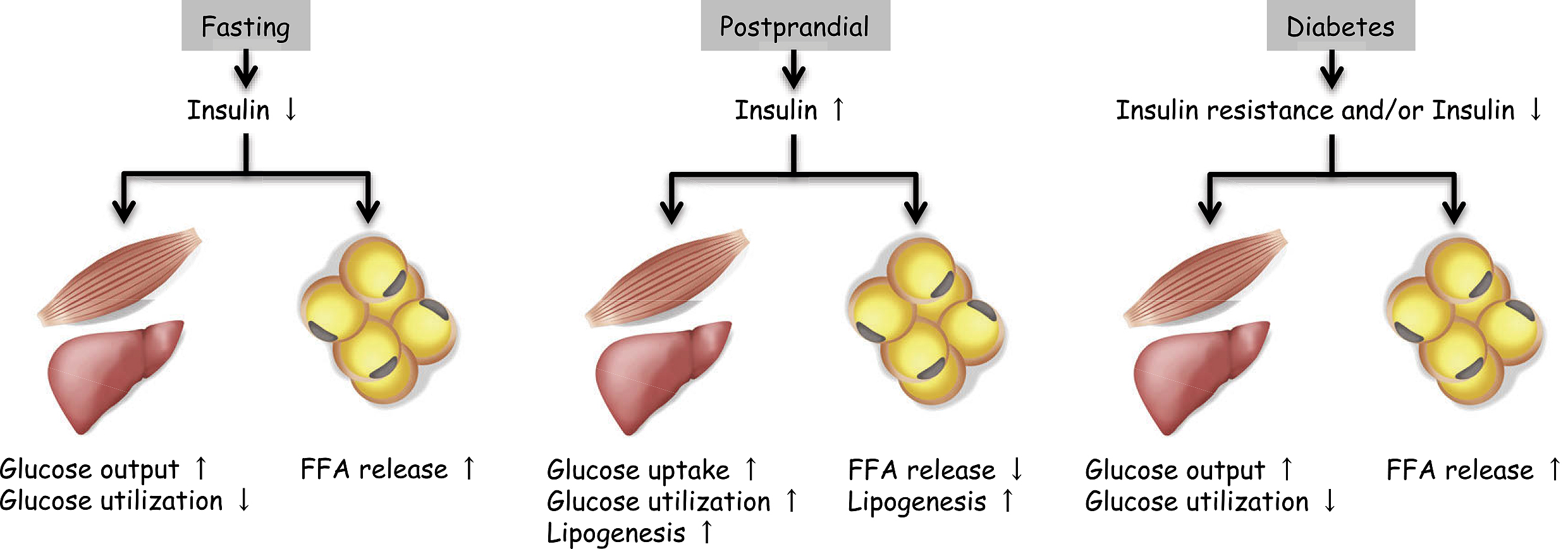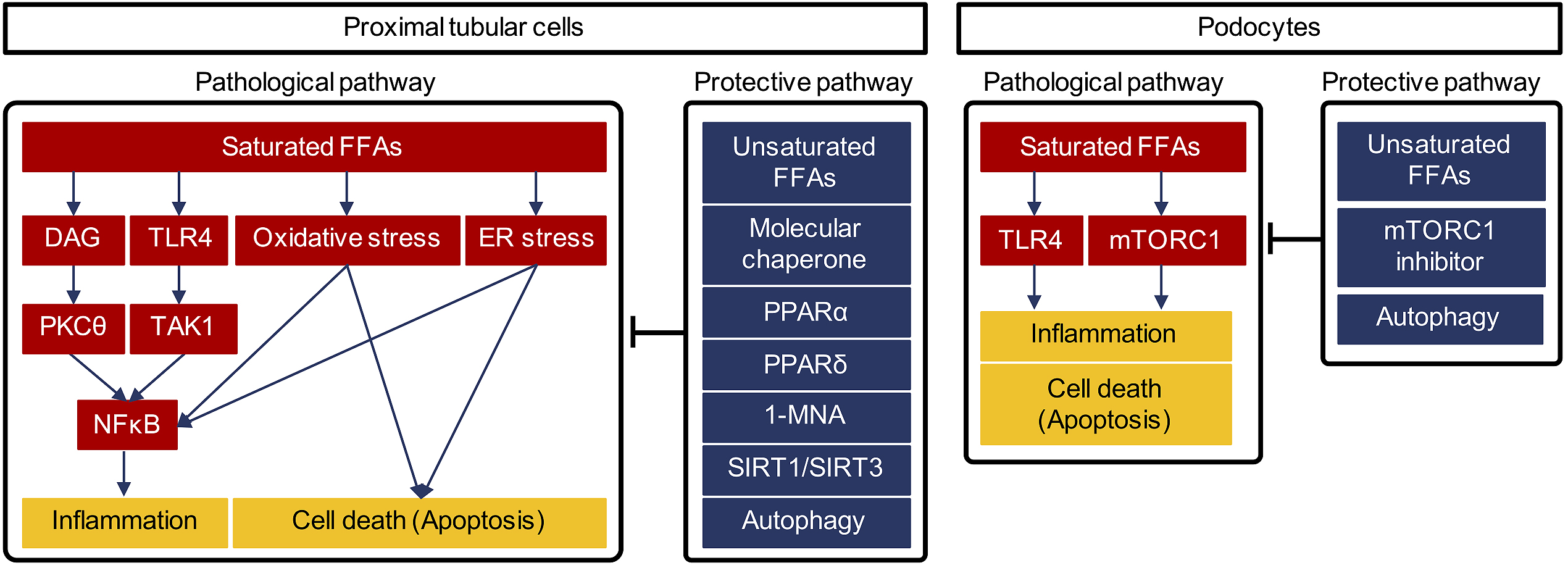Figure 1. Glucose and free fatty acid (FFA) metabolism during fasting, the postprandial period, and diabetes.
Insulin’s physiological action in glucose and lipid metabolism includes enhancing glucose uptake, glycogen synthesis and lipogenesis in peripheral tissues such as skeletal muscle and the liver and stopping gluconeogenesis in the liver and FFA release from adipose tissue. Thus, during fasting, decreased insulin secretion stimulates glucose production via gluconeogenesis in the liver and FFA release from adipose tissue and inhibits glucose utilization by skeletal muscle (left). In contrast, postprandial increases in insulin secretion stimulate glucose uptake, glucose utilization, and lipogenesis and inhibit FFA release (middle). In diabetes, insufficient insulin action due to insulin resistance and/or deficient insulin secretion causes hyperglycemia and sustained FFA release even during postprandial periods. Thus, hyperglycemia accompanied by sustained high levels of plasma FFA is a unique metabolic alteration only shown in diabetes (right). Hyperglycemia due to loss of insulin action to the liver and skeletal muscle has long been focused as a pathogenesis of diabetic vascular complications. Higher plasma FFA due to loss of insulin action to adipose tissue is another specific metabolic alteration in diabetes, which has been recently focused as a pathogenic factor in diabetic complications including nephropathy.
From: Lipotoxicity, Nutrient-Sensing Signals, and Autophagy in Diabetic Nephropathy

Figure 2. Proposal mechanism underlying saturated free fatty acids-induced cell damage.
Saturated FFAs damage proximal tubular cells via multiple mechanisms such as DAG-PKCθ pathway, TLR4-dependent pathway, oxidative stress, and ER stress (left). In addition to unsaturated FFAs, several agonists or other methods to activate certain molecules and cellular system including autophagy can antagonize cell damage by saturated FFAs. Similarly, saturated FFAs damage podocytes via activation of TLR4 and mTORC1 signal (right). Unsaturated FFAs, mTORC1 inhibitor, and autophagy activation may be useful to prevent the damage. FFAs, free fatty acids; DAG, diacylglycerol; PKC, protein kinase C; TLR4, toll-like receptor 4; 1-MNA, 1-methylnicotinamide. SIRT; silent information regulator; ER, endoplasmic reticulum; PPAR, peroxisome proliferator-activated receptor.
From: Lipotoxicity, Nutrient-Sensing Signals, and Autophagy in Diabetic Nephropathy


